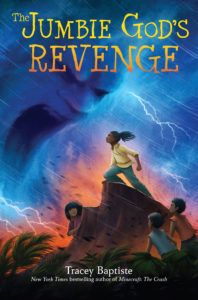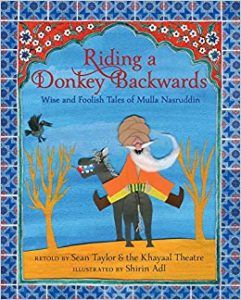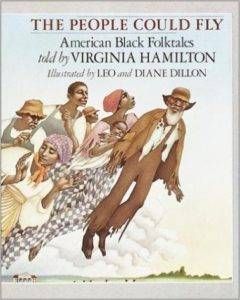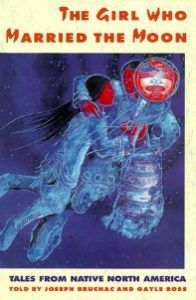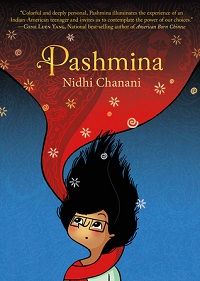In book three of the popular Jumbies series, Corinne must use her emerging supernatural powers to battle the angry god who would destroy her Caribbean island home. When a ferocious out-of-season hurricane wrecks Corinne’s seaside village, Corinne knows it’s not a typical storm. She discovers the storms weren’t caused by a jumbie, but by the angry god Huracan. Now Corinne, with the help of her friends and even some of her enemies, must race against time to find out what has angered Huracan and try to fix it before her island home is destroyed forever. Children and folktales have always gone together. Folktales for young readers have been used as entertainment, education, moral guides, warnings, and more recently as cultural landmarks and a way to introduce children to diverse perspectives. However, according to research conducted by Annette de Bruijn, “Approaching folktales as representative of the social, cultural, or literary heritage of ‘different’ cultures can, however, promote stereotypical or outdated understandings of other cultures which undercut intercultural educational aims.” Instead, she argues, reading folktales should be an interactive experience, with children sharing their connections with the tales and exploring meaning with other interpretations, particularly from minority groups. “Not only does this prevent monolithic and simplistic understandings of stories (and the cultures they are said to represent),” she explains, “it also offers children opportunities to potentially diversify their cultural knowledge in the exchange with other children.” And this can be huge for minority students, who so often fail to see any of their own cultural capital depicted in the classroom. To present their cultural knowledge and interpretations as meaningful aspects of the reading experience places value on them as students and as human beings. While her research focused on classrooms, these principles can still be utilized at home. Instead of letting children passively read each folktale—or be read to—you can encourage active engagement with the stories by asking your child to compare their own life to the stories within for similarities and differences. Several of these collections include backgrounds about where the stories come from, and if they don’t, it’s easy enough to find out more. Researching the tales can be another way of encouraging active engagement and interpretations. By letting your child be involved in the interpretation process, they’ll become better readers and hopefully better able to navigate differences in others, although it’s important not to place the understanding of an entire culture on the shoulders of folklore alone. The following list of folktales collects stories from around the world, and retellings of various stories from folklore, for young readers. They’re all edited and/or written by people from that culture, and explore the rich diversity of storytelling in folkloric traditions.
Children’s Folklore Collections
Riding A Donkey Backwards: Wise And Foolish Tales Of Mulla Nasruddin By Sean Taylor And The Khayaal Theatre, Illustrated By Shirin Adl
Mulla Nasruddin is the wise fool from Muslim folklore. He always has a good quip at the end of every tale, and he takes logic to a humorous level. In one story, a young Mulla explains to his teacher that his sheet is blank because he drew a donkey eating grass. The donkey ate all the grass, and then since the grass was gone, the donkey left. Hence, there’s nothing on the page. Each story is only a page or two long, with lots of gorgeous and humorous collage illustrations.
Breaking The Spell: Stories Of Magic And Mystery From Scotland By Lari Don, Illustrated By Tate James
From a selkie’s toes to a fireball shooting witch, these fun tales from Scotland will excite young readers. There are lots of strong girls and adventures to be had. The illustrations are wonderful.
Not One Damsel In Distress: World Folktales For Strong Girls
By Jane Yolen, Illustrated By Susan Guevara
As the title suggests, this collection of folktales also features strong girls who don’t need to be saved. It features a tale about a woman knight; one of my favorites from the Grimm brothers, “Fitcher’s Bird”; a samurai maiden; and so much more. While I enjoy this entire collection, I do wish the stories hadn’t always ended in marriage.
Indian Tales By Shenaaz Nanji, Illustrated By Christopher Corr
Each of the eight tales in this collection come from a different region in India, and accompanying each tale are bright illustrations and a brief introduction to the region. Adults will enjoy reading these as much as children. If you’re unfamiliar with Indian folklore, do yourself a favor and grab a collection! This one is a great start.
The People Could Fly: American Black Folktales By Virginia Hamilton, Illustrated By Leo Dillon And Diane Dillon
I love this collection of African American folktales so much; I think I’ve hand-sold this book more than any other at the bookstore I work at. Virginia Hamilton is a legendary middle grade author, as are the illustrators, husband and wife pair Leo Dillon and Diane Dillon. My only wish is that the lovely illustrations were in color; however, there are picture books of many of the tales with the same illustrations, but in color. If you’re a folklore nerd like me, you can collect them all. Try to get the version with the CD, because James Earl Jones reads it and it is a delight.
Nelson Mandela’s Favorite African Folktales Edited By Nelson Mandela
These tales come from all over the African continent, collected by the activist and former president of South Africa Nelson Mandela. It’s another one that’s worth listening to, with readers including Levar Burton, Charlize Theron, Samual L. Jackson, Whoopi Goldberg, and more. It’s perfect for car rides!
Tales Our Abuelitas Told: A Hispanic Folktale Collection By Alma Flor Ada And F. Isabel Campoy, Illustrated By Felipe Davalos, Susan Guevara, Leyla Torres, And Vivi Escriva
This award-winning collection of 12 Hispanic folktales shows the many diverse roots of Latinx culture: Indigenous, African, Arab, Hebrew, and Spanish. The full-page color illustrations by excellent Latinx artists make it a collectible, and one you’ll want to read many times.
The Girl Who Married The Moon: Tales From Native North America Edited By Joseph Bruchac And Gayle Ross
This is another personal favorite of mine. It’s a reminder that folktales that feature women being abused (such a common trope in Western folklore) are not universal. Bruchac’s collection Flying with the Eagle, Racing the Great Bear features coming-of-age stories for boys instead of girls.
Picture Book Retellings
Yokki And The Parno Gry By Richard O’Neill And Katharine Quarmby, Illustrated By Marieke Nelissen
Richard O’Neill and Katharine Quarmby have written two books based on Romani folktales: Yokki and the Parno Gry and Ossiri and the Bala Mengro. As Yokki and his family struggle to find a place to stay and work to be had on the road, he entertains them with stories of the Parno Gry—a flying horse—to cheer them up. This is a nice picture book about how stories can help overcome adversity.
Good Night, Wind: A Yiddish Folktale By Linda Elovitz Marshall, Illustrated By Maëlle Doliveux
This is a favorite with my daughter, though less for the story than for the intricate papercut illustrations. That’s not to say the story isn’t fantastic—it is!—but my daughter’s 20-month-old attention span doesn’t allow for more than a few sentences a page. It’s a perfect winter read.
Middle Grade Retellings
Pashmina By Nidhi Chanani
Pri finds an escape from the pressures of middle school and her growing family frustrations in a magical pashmina, a type of shawl, which she finds in a suitcase. The shawl transports her to a mythic place in India, a heritage Pri feels her mother has denied her when she moved them to America. This graphic novel is a lovely use of folklore in a contemporary setting.
Baba Yaga’s Assistant By Marika McCoola, Illustrated By Emily Carroll
Baba Yaga is a Slavic witch who flies around in a mortar, batters the ill-begotten with a pestle, and lives in a house with chicken feet. In other words, she’s my favorite witch from folklore and I long to become her. Except she maybe eats children and I do draw a line at that. But Masha, the protagonist in this graphic novel, had a wise grandmother that taught her the power of folklore. When Masha’s mother dies and her father starts dating another woman with a child, Masha decides to respond to a help-wanted ad and become Baba Yaga’s assistant, if she can pass the three tests.
Where The Mountain Meets The Moon By Grace Lin
This is the first book in a gorgeous middle grade series, though the books can be read in any order. They’re based on Chinese folklore, with folktales entwined in the main narrative. Grace Lin illustrates the books as well, and they’re fantastic read-alouds. The other books in the series are Starry River of the Sky and When the Sea Turned to Silver, and they’re all equally good. Hopefully these books will inspire even more storytelling at home and in the classroom, and encourage active engagement and interpretations with the stories. If you need more recommendations, check out these folktale collections for adults, and this giant list of fairytales for young readers.

